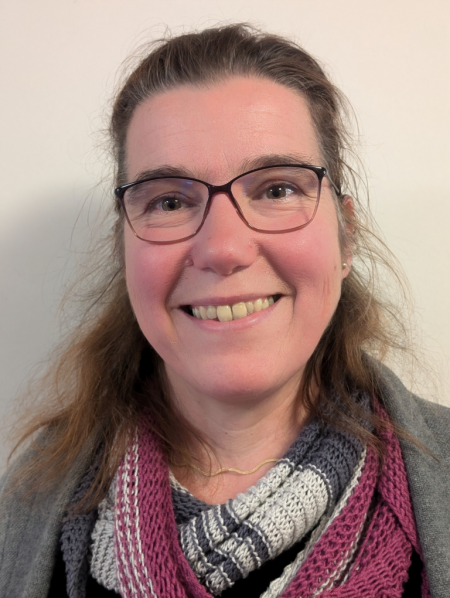
Dr Katja Rietdorf
Senior Lecturer
School of Life, Health & Chemical Sciences
Biography
Professional biography
I am a cell physiologist specialising in calcium signalling and the regulation of calcium channels. My PhD was obtained in the laboratory of Bernd Walz at the University of Potsdam in Germany on the topic of ‘Signalling Pathways that Stimulate Protein and Fluid Secretion in Cockroach Salivary Glands’. This was followed by studying IP3 receptor-interacting proteins in Martin Bootman and Mike Berridge’s laboratory at The Babraham Institute in Cambridge, and the characterisation of two-pore channels (TPCs) as endolysosomal calcium channels activated by the second messenger NAADP in Antony Galione’s laboratory at Oxford University. Subsequently I joined the laboratory of Michael Sanderson at UMASS Medical School in Worcester, MA, USA and started working on a special type of cardiac cells called pulmonary vein sleeve cells (PVCs). From UMASS I moved to The Open University, first as a Research Fellow, before I became a Lecturer in Biology in 2016 and a Senior Lecturer in 2021.
Research interests
My research focusses on the role of calcium signalling in health and disease, especially in cardiac cells and cancer. Much of my work has focussed on the regulation of intracellular calcium release channels, namely IP3 receptors and ryanodine receptors localised on the endo- or sarcoplasmic reticulum, and two-pore channels (TPCs) on endosomes and lysosomes.
Over the past years, we have worked on a pro-arrhythmic type of cardiac myocyte that is located in the pulmonary vein, called pulmonary vein sleeve cells (PVCs). The spontaneous activity of these cells is one of the main causes of atrial fibrillation, the most common form of cardiac arrhythmia. In one of our projects, we are characterising the structural and functional changes that occur in PVCs during ageing.
Based on my interest in endolysosomal ion channels, especially TPCs, and the fact that recent work provided evidence that the activity of TPCs can modulate the function of cardiac myocytes, we are studying how lysosomal ion channels contribute to the function of healthy cardiac myocytes. Individuals with the lysosomal storage disorder CLN3 (also called juvenile dementia) develop cardiac dysfunction during their disease progression. CLN3 belongs to a group of lysosomal storage disorders called Neuronal Ceroid Lipofuscinoses (NCLs). To study what causes the decline in the cardiac function observed in CLN3 patients, we are comparing the structure and function of iPSC-derived cardiac myocytes using cells from patients with and without mutations in the CLN3 gene.
In other projects in the laboratory study the role of calcium in cancer and autophagy. A current PhD student studies the roleof calcium-signalling genes in the progression of prostate cancer to neuroendocrine prostante cancer (NEPC).
Teaching interests
MRP Chair and module team co-chair for S296: Cell and molecular biology
Module team member for S317: Biological science: From genes to species
External collaborations
Dr Katharine Dibb, Manchester University (Studying the structure and function of PVCs)
Publications
Book Chapter
Tissue Specificity: Store-Operated Ca2+ Entry in Cardiac Myocytes (2017)
Journal Article
Autophagy and cancer drug resistance in dialogue: Pre-clinical and clinical evidence (2023)
Examining Cardiomyocyte Dysfunction Using Acute Chemical Induction of an Ageing Phenotype (2020)
Cardiac pathology in neuronal ceroid lipofuscinoses (NCL): More than a mere co-morbidity (2020)
Deleterious effects of calcium indicators within cells; an inconvenient truth (2018)
The regulation of autophagy by calcium signals: Do we have a consensus? (2018)
The vascular Ca2+-sensing receptor regulates blood vessel tone and blood pressure (2016)
Zinc-imidazolate polymers (ZIPs) as a potential carrier to brain capillary endothelial cells (2015)
Atrial myocytes demonstrate the diversity of cardiac calcium signalling (2015)
Reconstituted human TPC1 is a proton-permeable ion channel and is activated by NAADP or Ca2+ (2014)
Ca2+-sensitive fluorescent dyes and intracellular Ca2+ imaging (2013)
Loading fluorescent Ca2+ indicators into living cells (2013)
Converting fluorescence data into Ca2+ concentration (2013)
Two-pore channels form homo- and heterodimers (2011)
NAADP mobilizes calcium from acidic organelles through two-pore channels (2009)
Regulation of InsP3 receptor activity by neuronal Ca2+-binding proteins (2004)
Presentation / Conference
Ultrastructural changes in hearts from CLN3 mice (2019)
Broken Hearts in Juvenile Dementia: investigating cardiac myocytes in CLN3 disease (2019)
Broken Hearts in Juvenile Dementia: investigating cardiac myocytes in CLN3 disease (2018)
Broken Hearts in Juvenile Dementia: investigating cardiac myocytes in CLN3 disease (2018)
Mibefradil; a T-type calcium channel blocker as a potential anti-cancer agent. (2016)
Can we use chemical-induction of ageing to develop a model of cardiac ageing? (2016)
Chemically inducing ageing in neonatal rat ventricular myocytes (2016)
Intracellular calcium: a dual role in autophagy (2016)
Inhibition of calcium release from InsP3Rs triggers autophagy (2015)
Ageing-induced ultrastructural changes of mitochondria of pulmonary vein sleeve cells (2015)
Intracellular calcium has a dual role in the regulation of autophagy (2015)
Inhibition of InsP3 receptor signalling induces autophagy (2014)
Spontaneous Ca2+ signalling in pulmonary vein sleeve cells increases during ageing (2014)
In vitro assessment of alveolar macrophage responses to inhaled particulate medicines (2014)
Inhibition of InsP3 receptor signalling induces autophagy (2014)